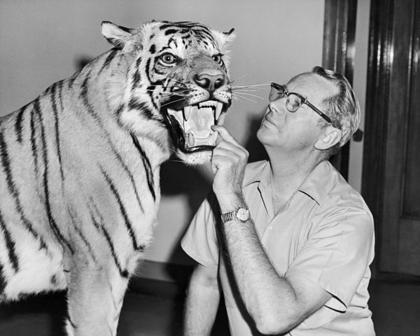Taxidermy
Updated:
7 Sep 2020
Taxidermy is the preserving of an animal's body via mounting (over an armature) or stuffing, for the purpose of display or study. Animals are often, but not always, portrayed in a lifelike state. The word taxidermy describes the process of preserving the animal, but the word is also used to describe the end product, which are called taxidermy mounts or referred to simply as "taxidermy". The word taxidermy is derived from the Greek words taxis and derma. Taxis means "arrangement", and derma means "skin" (the dermis). (mammals, birds, fish, reptiles, and less commonly on amphibians) but can also be done to larger insects and arachnids under some circumstances. Taxidermy takes on a number of forms and purposes including hunting trophies and natural history museum displays. Museums use taxidermy as a method to record species, including those that are extinct and threatened, in the form of study skins and life-size mounts. Taxidermy is sometimes also used as a means to memorialize pets. A person who practices taxidermy is called a taxidermist. They may practice professionally, catering to museums and sportsman (hunters and fishermen), or as amateurs (hobbyists). A taxidermist is aided by familiarity with anatomy, sculpture, painting, and tanning.




